July 7, 2024 | 08:01 GMT +7
July 7, 2024 | 08:01 GMT +7
Hotline: 0913.378.918
July 7, 2024 | 08:01 GMT +7
Hotline: 0913.378.918
This article is based on a study tour to Yosemite, Yellowstone, and Golden Gate National Parks in the United States, organized by WWF-Vietnam through the Biodiversity Conservation Component of the Sustainable Forest Management and Biodiversity Conservation (VFBC) Project, funded by the United States Agency for International Development (USAID).

In the United States, the National Park system is considered one of the nation's greatest achievements. With 63 National Parks and 366 Nature Reserves (NRs) of various types, the United States is proud to have one of the largest and most diverse national park systems in the world.
National Parks are established to protect and preserve areas of environmental, ecological, and cultural significance. Recognizing these special values, the US Congress established the National Park Service (NPS) as the unified management agency for national parks in the United States.
The NPS is a federal government agency under the United States Department of the Interior. It manages all national parks and protected areas, totaling 429 sites under various designations. The United States Congress created this agency on August 25, 1916, through the National Park Service Organic Act (signed by President Woodrow Wilson). The NPS was given the mission: "to conserve the scenery, natural and historic objects, and wildlife, and to provide for the enjoyment of the same in such a manner and by such means as will leave them unimpaired for the enjoyment of future generations."
This mission statement serves as the guiding principle for all US National Parks, emphasizing the goal entrusted to the NPS by Congress to "provide people with the right to enjoy" while ensuring proper conservation for future generations.
For this reason, the federal government has invested heavily over the past century in developing infrastructure, human resources, and financial resources to manage, monitor, and ensure that people can enjoy the unique values of the National Parks.
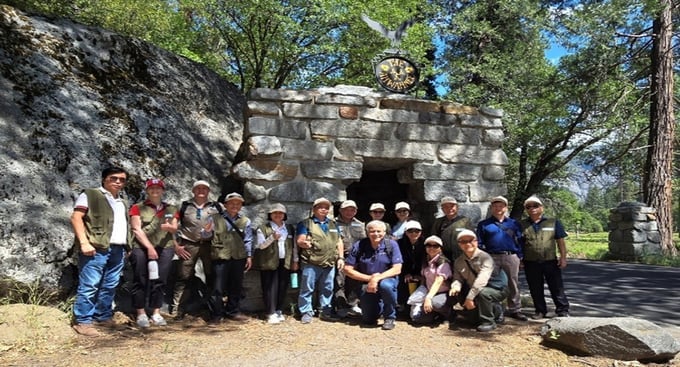
National Parks and Reserves in the United States preserve environmental values, landscapes, biodiversity, and culture. They are easily accessible to the public for tourism, entertainment, relaxation, study, and research. This approach, where conservation serves both preservation and public enjoyment, is worth emulating to benefit both current and future generations.
The NPS has an organizational structure at three main levels:
(i) Central level: This includes the Office of the Director, functional departments (such as Planning, Finance, Human Resources, and Public Relations), and specialized centers (such as the Conservation Center and the Archaeology Center).
(ii) Regional level: There are seven regional offices, each responsible for different geographical areas across the country.
(iii) Grassroots level: This consists of units directly managing national parks, historical relics, and conservation areas.
This structure ensures unified management from the central level while allowing flexible decentralization to local units. It provides a model for maintaining consistency in the management system and organizational structure of national parks and protected areas. This setup ensures efficiency according to the scale and specialized capacity of central and regional agencies, while allowing practical and flexible operations at the local level.
The NPS employs a diverse workforce of approximately 20,000 full-time employees and tens of thousands of volunteers. Key positions include park rangers, ecologists, archaeologists, conservation specialists, guides, and administrative staff.
The NPS's operating budget comes from many sources: Federal budget (accounting for about 80%); Entrance and service fees; Donations and sponsorships from organizations and individuals; Sales of souvenirs and publications. The total annual budget is about 3 billion USD, allocated for the following activities: Conservation and restoration of works; Scientific research; Community education; Paying staff salaries; Investing in infrastructure. National parks and protected areas are invaluable national resources, with multi-value synthesis and related to many sectors, fields and many participants.
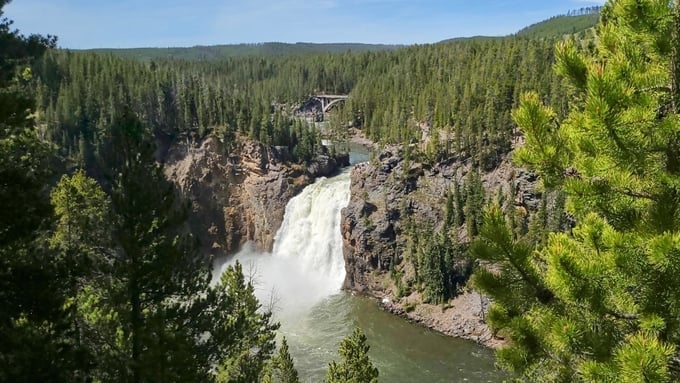
These material resources cannot be sold to be used as funds to nurture and protect national parks and nature reserves. Therefore, it is necessary to recognize that investment resources for the activities of national parks and nature reserves must still primarily come from the State.
In addition, developing a sufficiently strict and clear legal framework is essential to create more resources for the conservation and development of national parks and nature reserves, including ecotourism, forest environmental services, education, entertainment, and more.
Experience from the United States shows that it is necessary to clearly define and ensure sufficient powers, responsibilities, and authority for Forest Rangers to effectively perform their tasks according to a management mechanism specific to the system of National Parks.
Rangers play a pivotal role in the NPS national park system, with the following main tasks: (i) Protecting natural resources (patrolling and monitoring areas under their management; preventing environmental damage, illegal hunting, and implementing forest fire prevention and control measures); (ii) Supporting and serving tourists (providing information, guiding tourists, ensuring safety for tourists, and organizing environmental education activities); (iii) Conducting scientific research (collecting data on ecosystems, and conducting research projects); (iv) Cooperating with scientists; and (v) Law enforcement (handling violations within the park, investigating cases related to environmental crimes, and coordinating with other law enforcement agencies).
Park rangers play an important role not only in protecting natural resources but also in supporting and serving visitors and enforcing laws in national parks. They are fully equipped with the knowledge, skills, and tools to carry out their duties professionally and safely. At the same time, park rangers also have close relationships with the community, helping to create consensus and support from local residents.
A key element in the effective management of National Parks in the United States is the use of science and technology to inform decisions and solutions. Yellowstone National Park has adopted advanced technologies such as remote monitoring and GPS systems to monitor and manage rare species. This includes tracking and collecting information about wildlife, assessing habitat changes, and understanding human impacts on nature. This makes conservation and resource management more effective, while also facilitating scientific research and sharing information with the public.
Modern technologies such as geographic information systems (GIS), automatic environmental monitoring equipment, remote surveillance cameras, drones, and visitor information management software play an important role in supporting the work of the rangers. Additionally, specialized equipment such as multi-terrain patrol vehicles, forest firefighting equipment, rescue and emergency gear, and modern scientific research tools are indispensable for protecting natural resources.
The experience of Yellowstone National Park is an outstanding example of the attention and implementation of scientifically sound, long-term conservation and rewilding of endangered species. Conservation and rewilding efforts for bison, gray wolves, mountain lions, brown bears, and native birds and fish were priorities for the NPS and Yellowstone National Park from early on and have been very successful.
The story of bison rescue, conservation, breeding, and rewilding is world-famous. From an estimated 1,000 individuals remaining in the northern United States in 1886, there are now over 45,000 individuals preserved in their original areas. Notably, the National Park has cooperated in transferring, conserving, and developing bison with local tribes, attracting substantial funding from conservation partners, governments, and tribes.
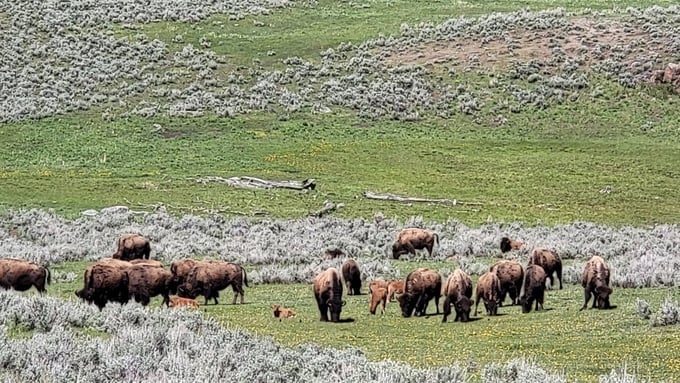
Similar to the bison, translocation, conservation, and rewilding efforts have also been successful for the gray wolf, increasing their population from zero individuals in 1995 to 108 individuals in 10 packs in Yellowstone National Park by 2022. The grizzly bear conservation story is also notable, with their numbers rising from less than 100 individuals in 1979 to 1,063 individuals in 2021.
The lesson learned here is the necessity of having long-term and appropriate strategies and plans to conserve endangered and rare species. This approach allows for taking suitable steps while also calling for support (financial, expertise, etc.) from international and domestic conservation organizations and partners.
For species at high risk of extinction, it is crucial to have agendas, cooperation, and diplomacy with other countries to proactively capture and transport them to professional rescue and conservation centers. This creates a sufficient breeding stock for rewilding and population restoration in safe areas, ensuring adequate habitat conditions, river environments, and food sources for the future.
Rewilding endangered and rare species is one of the measures used to ensure the sustainability of wildlife species. When a species' habitat is severely affected by human activities, breeding or translocating them and releasing them into safe and ecologically suitable areas helps them recover and maintain the ecological diversity of that area.
However, rewilding needs to be done carefully and scientifically to ensure safety and success. Experts must conduct thorough research and monitoring before deciding to rewild a wildlife species, and there needs to be cooperation and support from indigenous communities in implementing this measure.
In addition to the State budget, the National Parks of the United States actively engage in multilateral cooperation to ensure sustainable financial resources. Yellowstone National Park is one of the most famous and favorite tourist destinations in the United States. The park covers a total area of 898,000 hectares and receives over 4 million visitors annually. Yellowstone National Park has 845 historical sites, 723 km of roads, 1,760 km of tourist trails, 750 employees, and 540 volunteers. Its annual budget is 125 million USD, comprising: Federal budget: 95 million USD; Commercial service contracts: 13 million USD; Entrance fees: 10 million USD; Donations: 3.5 million USD; Other sources: 3.5 million USD.
Established in 1890, Yosemite National Park in California is one of the most popular and attractive tourist destinations in the United States. With its spectacular waterfalls, pristine forests, and majestic mountain peaks, Yosemite attracts more than 4 million visitors from all over the world each year. In addition to its natural beauty, Yosemite National Park has a very effective management mechanism for finance, tourism, and conservation of nature and culture. Yosemite National Park has mobilized many different financial resources.
On average, the park needs $100 million annually to ensure income for 950 employees and organize all activities, of which: $30 million comes from the federal budget; $15-20 million from entrance fees (after deducting 20% tax); $15-20 million from leasing infrastructure, facilities, and contracting tourism services; $10-15 million from the Yosemite Conservancy (raising donations); $10 million from the San Francisco city budget (paying for the protection of forest basins and dams that provide clean water for the city); and $5-10 million from other sources of revenue.
National Parks can sign contracts with tourism companies to coordinate the organization of services and tourism; usually, 3-5% of the revenue generated from services (in addition to entrance fees) is paid to the National Park. Additionally, the formation and operation of non-profit conservation partners have greatly supported the National Park in mobilizing additional resources from society through advocacy and donations to implement conservation programs, projects, or other activities that the National Park cannot or does not have regulations to implement. These organizations operate under separate laws passed by the US Congress, providing a clear legal framework.
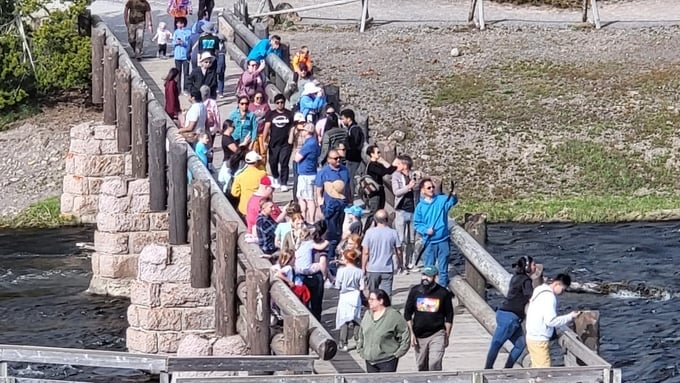
To have a diverse and sustainable source of finance as described, it is necessary to establish a clear legal framework for national parks and protected areas to lease or use facilities built from public investment sources. At the same time, a clear legal corridor for non-profit organizations to mobilize finances to support conservation work in national parks and protected areas is essential.
With the number of visitors reaching over 4 million annually, Yosemite National Park has developed a comprehensive transportation infrastructure system, nature trails, ticket sales points, a free bus system, and facilities for customer services such as campgrounds, restaurants, shops, and sightseeing spots. These measures help limit the impact on the landscape, environment, and culture of the area.
To minimize negative impacts on the environment, controlling visitor traffic and allocating visit times to each area have helped the National Park limit traffic congestion and avoid overloading the physical capacity (threshold of area, space allowed), biological capacity (threshold of impact on wild animals and plants, especially changing the behavior of endangered species), and tourist psychology (threshold of causing annoying noise). By allocating visit times, visitors can fully experience the attractions and have the “opportunity” to stay longer and spend more. This is a typical lesson in applying experiential economics to National Parks and Protected Areas.
A profound lesson learned from US national parks is that developing convenient tourism services is always associated with raising awareness about resource conservation and sustainable environmental protection.
At Yosemite National Park, visitors and local communities can participate in educational programs and experiences related to nature, culture, and history, such as hiking, mountain climbing, or visiting museums and educational centers.
The system of informational signs and explanatory models in educational centers, museums, nature trails, historical sites, and scenic spots are all designed uniformly in terms of materials and styles, with very concise, scientific, and professional presentation content.
The system of trash cans, guest storage boxes, and other amenities is designed to be friendly and safe for wild animals, with tight lids, warning symbols, and clear instructions.
Translated by Quynh Chi

(VAN) Ensuring environmental sanitation is crucial for preventing and treating skin diseases in pets. However, Vietnam has not yet fulfilled this requirement.

(VAN) On July 5 afternoon, Bac Lieu province organized a press conference to provide periodical press information for the second quarter of 2024 and information about the Vietnam Salt Industry Festival – Bac Lieu 2024.

(VAN) Ho Chi Minh City aims for 75-85% of high-tech agriculture to account for the total value of agricultural, forestry, and fishery production.
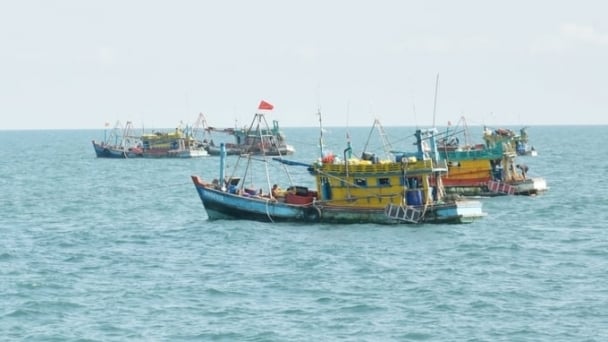
(VAN) On the afternoon of July 5, the Fisheries Surveillance reviewed the anti-IUU work of the first half and implemented tasks for the second half of 2024.

(VAN) Each year, Long Khanh A shawl weaving village supplies nearly 2 million bandanas of all kinds to the market. The scarves are sold to domestic and foreign markets.

(VAN) Despite being very drastic in preventing fishing vessels from violating foreign waters, the 'picture' of combating IUU fishing in Binh Dinh still has dark color patches.

(VAN) Besides agriculture export targets of 54 billion USD and a growth rate of 3% by 2024, the MARD Minister believes that there are actions to be taken to transition towards sustainable agricultural development.